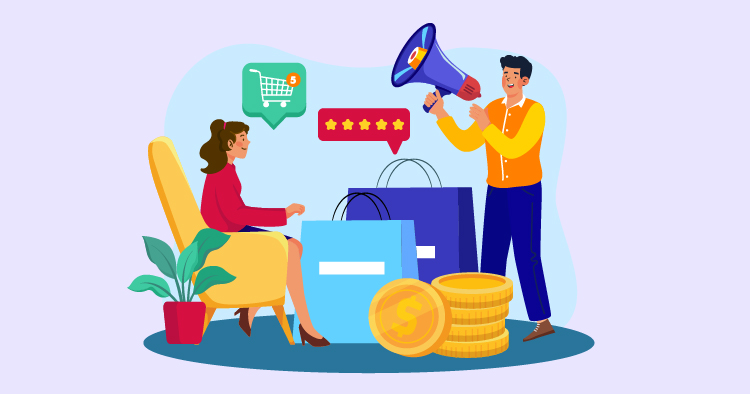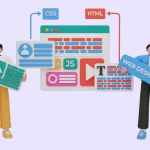The journey of converting leads into loyal subscribers is at the heart of a successful Software as a Service (SaaS) business. A well-structured sales funnel is crucial for guiding potential customers through awareness, interest, decision, and action. Companies can effectively nurture leads, optimize conversion rates, and drive subscription success by understanding the unique challenges and opportunities within the SaaS industry. This article will explore the critical components of a SaaS sales funnel and provide insights on constructing one that aligns with your business goals and customer needs.
Understanding the Basics: What is a SaaS Sales Funnel?
A SaaS sales funnel describes the process that leads someone from first hearing about your software to becoming a regular user. It’s like a roadmap that helps businesses understand how to encourage people to sign up and stick around. For companies that offer software as a service (SaaS), this funnel is a vital tool for planning how to win over new customers and keep them happy.
The SaaS sales funnel is divided into several steps, each representing a phase in the customer’s journey. These phases include becoming aware of the product, showing interest, thinking it over, signing up, getting started, and staying on as a loyal user. A good strategy for each phase is essential to keeping potential customers.
Stage 1: Awareness
The journey begins with awareness. You want to promote your SaaS product and ensure people know how it can help them. This could involve online ads, social media buzz, or making a splash at tech conferences. The aim is to put your product on the map.
Content marketing and SEO can be powerful ways to attract attention. By sharing helpful information and ensuring your website is easy to find on search engines, you can draw in people looking for solutions your software provides. This is the starting point for potential customers to notice and consider your offer.
Stage 2: Interest
At this stage, your goal is to keep potential customers engaged in your offerings. Creating interesting and useful content is vital. Think about writing blog posts that answer common questions your target audience might have. Hosting webinars can also be a great way to showcase your software capabilities in real-time, and making informative videos can help explain complex features in an easy-to-digest format.
Don’t forget about the power of social media and email. These platforms are perfect for keeping in touch with potential customers. You can send regular updates, share newsletters packed with valuable information, or even reach out with personalized messages. This ongoing communication helps keep your brand at the forefront of your prospects’ minds.
Stage 3: Evaluation
Your potential customers are taking a closer look at your offer and comparing it to other options. It’s your job to make sure your SaaS stands out. Point out what makes your software unique. Maybe it’s an innovative feature that no one else has, or perhaps it’s the fact that your software is more cost-effective. Excellent customer support can also be a big draw.
Struggling with Digital marketing? Book Your Free Strategy Session!
- 30-Minutes Session
- Expert Insights
- Data-Driven approach
- Optimized Strategies for Your Goals
Using customer testimonials and case studies can be incredibly effective at this stage. When prospects see real-life examples of how your software has helped others, it adds trust and credibility. Positive feedback and success stories can make a big difference in swaying someone’s decision to choose your solution over another.
Stage 4: Conversion
The design and content of your landing pages are essential for turning interested visitors into customers. You want to ensure that when someone lands on your page, they know exactly what you’re offering and what they need to do next. This could be to sign up for a free trial, book a demo, or take advantage of a limited-time offer.
Here’s how to make that happen:
– Clarity is King: Your landing page should be straightforward and focused. A clean design with a clear message helps visitors understand your product’s value.
– Compelling CTAs: Your call-to-action should stand out and encourage the visitor to take the next step. Use action-oriented language that prompts immediate response.
– Try Before You Buy: Offering free trials or demos gives potential customers a taste of your product. This hands-on experience can be just what they need to decide to purchase.
– Sweeten the Deal: Limited-time offers or discounts can create a sense of urgency and nudge those unsure to decide.
Stage 5: Onboarding
Once a customer has chosen your SaaS product, a smooth onboarding process is vital to keep them around. It’s about ensuring they feel supported and can start benefiting from your product immediately.
Here are some tips to ensure a great onboarding experience:
Struggling with Digital marketing? Book Your Free Strategy Session!
- 30-Minutes Session
- Expert Insights
- Data-Driven approach
- Optimized Strategies for Your Goals
– Easy Does It: Make the initial setup as simple as possible. Clear instructions and an intuitive interface will help new users get up and running without frustration.
– Helpful Resources: Provide plenty of resources like guides, tutorials, and FAQs. When customers have the tools to answer their questions, they’re more likely to succeed.
– Support They Can Count On: Be ready to offer help when your customers need it. Responsive customer service can make a big difference in their overall satisfaction.
– Personal Touch: Personalize the onboarding experience by paying attention to how each customer uses your product. Tailored experiences show that you value their business and understand their needs.
By focusing on these areas, you can convert more visitors into customers and ensure those customers stick around and get the most out of your SaaS product.
Stage 6: Upselling and Cross-selling
Upselling is about encouraging customers to purchase a more expensive or upgraded version of what they’re already buying. To do this effectively, focus on how these upsells add value. For instance, if you’re selling a software subscription, you might offer an upsell with premium features. These features should be more advanced and help customers achieve their goals more efficiently. Similarly, if your customers are growing, they might need additional user licenses. Enhanced support services could be a game-changer for those who rely heavily on your service, offering them peace of mind and quicker resolutions to their issues.
Cross-selling involves offering customers related products or services that complement what they’ve already purchased. To cross-sell effectively, use the data you have about your customers to segment them into different groups based on their behavior and needs. This allows you to personalize your cross-selling efforts. For example, if a customer has purchased a laptop from your store, you might cross-sell them a laptop case or additional warranty services that fit with their chosen laptop.
Tracking and Analytics
Monitoring key performance indicators (KPIs) is crucial for understanding how well your sales funnel works. You can see how many people are moving through each funnel stage by tracking metrics like conversion rates. The customer acquisition cost tells you how much you spend to acquire each new customer, which is vital for budgeting and profitability. A churn rate, which measures how many customers stop using your service over a certain period, can give you insights into customer satisfaction and retention.
Analytics tools are your best friends when it comes to understanding your sales funnel. They help you see the big picture and the tiny details. With these tools, you can determine which parts of your funnel are performing well and which might cause potential customers to lose interest. This information is like a roadmap that shows you where to improve the flow through your funnel. By using analytics, you can make data-driven decisions, leading to more subscriptions and a healthier bottom line for your business.
Marketing automation is like having extra hands helping you manage your SaaS sales funnel. It’s about using software to handle the routine tasks that can eat up your day—like sending emails to customers or keeping track of who’s interested in what you offer. This way, you and your team can concentrate on the big-picture strategies that move the needle. With automation, you can send messages and offers to different customers at the right time based on their actions and interactions with your service.
When it comes to connecting with customers, personalization is your best friend. It’s all about making each customer feel you’re speaking directly to them. You can use your data about them to make your messages more relevant. For example, if you know a customer uses a particular feature often, you might send tips or suggest complementary features that could help them even more. When you tailor the experience to each user’s behavior and preferences, they’re more likely to stick around and even upgrade their service with you.
Building Trust and Credibility
Trust is everything in the SaaS world, and one of the best ways to build it is by sharing your knowledge. This means creating and sharing content that’s not just promotional but genuinely useful. Think about writing in-depth blog posts, whitepapers, or case studies that help solve everyday problems or share insights into the industry. When you provide valuable information, people see you as an authority in your field—a trusted advisor rather than just another vendor.
People often look to others when making decisions, which is where social proof comes in. It’s about showing potential customers that others like them—have succeeded with your software. You can display customer reviews, testimonials, and detailed case studies. When visitors to your website or social media see that others have had an enjoyable experience with your SaaS product, they’re more likely to believe they will, too. It’s a powerful way to reassure them they’re making the right choice.
Creating customer success programs is a smart way to keep your customers returning. These programs help customers get the most out of your SaaS product, ensuring they’re happy and see the value of staying with you. When customers reach their goals using your product, they’re more likely to feel satisfied and remain loyal.
Offering special perks can also make a big difference in keeping customers. Consider giving them access to special features, price cuts when they renew, or points for using your service regularly. These rewards show your customers that you appreciate them, making them want to continue doing business with you.
Referral programs can be a smart move to get more customers without spending too much. You can get your current customers to help by giving them something in return for bringing in new people. This could be a discount, an upgrade, or other rewards for every new customer they bring in who signs up.
To make a referral program work well, you must ensure your customers know what’s in it for them. Tell them clearly about the perks they’ll get for spreading the word and make it as simple as possible for them to refer others. When you do this right, more customers will want to join in, and your customer base will grow.
Testing and Optimization
Regularly checking how your SaaS sales funnel is doing and making any necessary changes is essential to keep it working smoothly. By examining and adjusting the different parts of your funnel, you can help it perform better and turn more potential customers into actual buyers.
Try out A/B testing to see what works best in your funnel. This involves trying different versions of your website pages, emails and calls to action to see which ones get the best response. Many tools make this easy. Once you have the results from these tests, you can use that information to make intelligent choices about improving your sales funnel.
Integration with CRM and Sales Tools
Linking your sales funnel with CRM (Customer Relationship Management) systems can be helpful. It gives you one place to keep track of all your interactions with customers, manage potential leads, and view your sales information. You can experience a smoother and better-organized sales process when everything is connected.
To help your sales team work better, use automation and ensure that your sales funnel and CRM tools share information. Automation can take care of repetitive tasks and cut down on mistakes while having up-to-date customer information means your sales team can make intelligent choices and tailor their approach to each customer. This can lead to more successful sales and happier customers.
Final Thoughts
Designing an effective SaaS sales funnel is an ongoing process that requires attention to detail, analysis, and frequent optimization. It’s about creating a seamless journey that attracts leads and retains them as satisfied subscribers. By continuously refining your approach based on customer feedback and performance metrics, you can ensure that your sales funnel remains effective. Implementing the strategies discussed will help your SaaS business thrive in a competitive market, fostering growth and sustaining long-term success.



